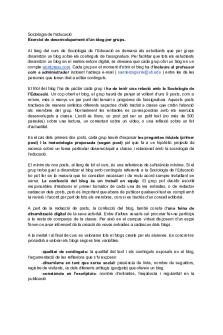Psychology blog: Agonists and antagonists - Pamoja Education PDF

| Title | Psychology blog: Agonists and antagonists - Pamoja Education |
|---|---|
| Author | Anonymous User |
| Course | Psychology |
| Institution | York St John University |
| Pages | 2 |
| File Size | 80.4 KB |
| File Type | |
| Total Downloads | 64 |
| Total Views | 130 |
Summary
Nervous system...
Description
Psychology blog: Agonists and antagonists Peter Anthony
Neurons in certain brain areas are specific in which neurotransmitters they release and receive. This means that their action can be affected by particular drugs, both medical and recreational, before their release into the synapse and also during their uptake by the receiving neuron or reuptake by the releasing neuron. Drugs can influence the synapse in two ways: they can either act as agonists or antagonists. Agonists are substances that bind to synaptic receptors and increase the effect of the neurotransmitter. Antagonists also bind to synaptic receptors but they decrease the effect of the
neurotransmitter. Therefore, if a neurotransmitter is inhibitory, an agonist will increase its inhibitory characteristics and an antagonist will decrease it. Similarly, an excitatory neurotransmitter will have its excitatory effect increased by an agonist but decreased by an antagonist. Therefore, an agonist amplifies a neurotransmitter’s normal effects and an antagonist reduces them. Chlorpromazine and haloperidol are antagonists for dopamine as they block the receptors to limit the uptake of dopamine. Endorphins like opiate drugs, codeine and morphine are agonists as they bind to the neurons to heighten pleasure or decrease pain. Note carefully that agonists and antagonists do not alter the type of change a neurotransmitter causes. For example, an antagonist will not change an excitatory neurotransmitter into an inhibitory one; it will just lower the degree of the excitatory response....
Similar Free PDFs

BLOG 1 - BLOG
- 3 Pages

Evidence Blog Pet peeves blog
- 1 Pages

12min Blog
- 4 Pages

Exercici blog
- 2 Pages

Week5 - blog
- 6 Pages

Discussion Blog
- 1 Pages

Pragmatism AND Education
- 4 Pages

Contemporary India AND Education
- 85 Pages

ICT and Teacher Education
- 7 Pages

Education and culture shock
- 5 Pages

Special Education and ICTs
- 8 Pages

EDUCATION AND CULTURE
- 12 Pages
Popular Institutions
- Tinajero National High School - Annex
- Politeknik Caltex Riau
- Yokohama City University
- SGT University
- University of Al-Qadisiyah
- Divine Word College of Vigan
- Techniek College Rotterdam
- Universidade de Santiago
- Universiti Teknologi MARA Cawangan Johor Kampus Pasir Gudang
- Poltekkes Kemenkes Yogyakarta
- Baguio City National High School
- Colegio san marcos
- preparatoria uno
- Centro de Bachillerato Tecnológico Industrial y de Servicios No. 107
- Dalian Maritime University
- Quang Trung Secondary School
- Colegio Tecnológico en Informática
- Corporación Regional de Educación Superior
- Grupo CEDVA
- Dar Al Uloom University
- Centro de Estudios Preuniversitarios de la Universidad Nacional de Ingeniería
- 上智大学
- Aakash International School, Nuna Majara
- San Felipe Neri Catholic School
- Kang Chiao International School - New Taipei City
- Misamis Occidental National High School
- Institución Educativa Escuela Normal Juan Ladrilleros
- Kolehiyo ng Pantukan
- Batanes State College
- Instituto Continental
- Sekolah Menengah Kejuruan Kesehatan Kaltara (Tarakan)
- Colegio de La Inmaculada Concepcion - Cebu



